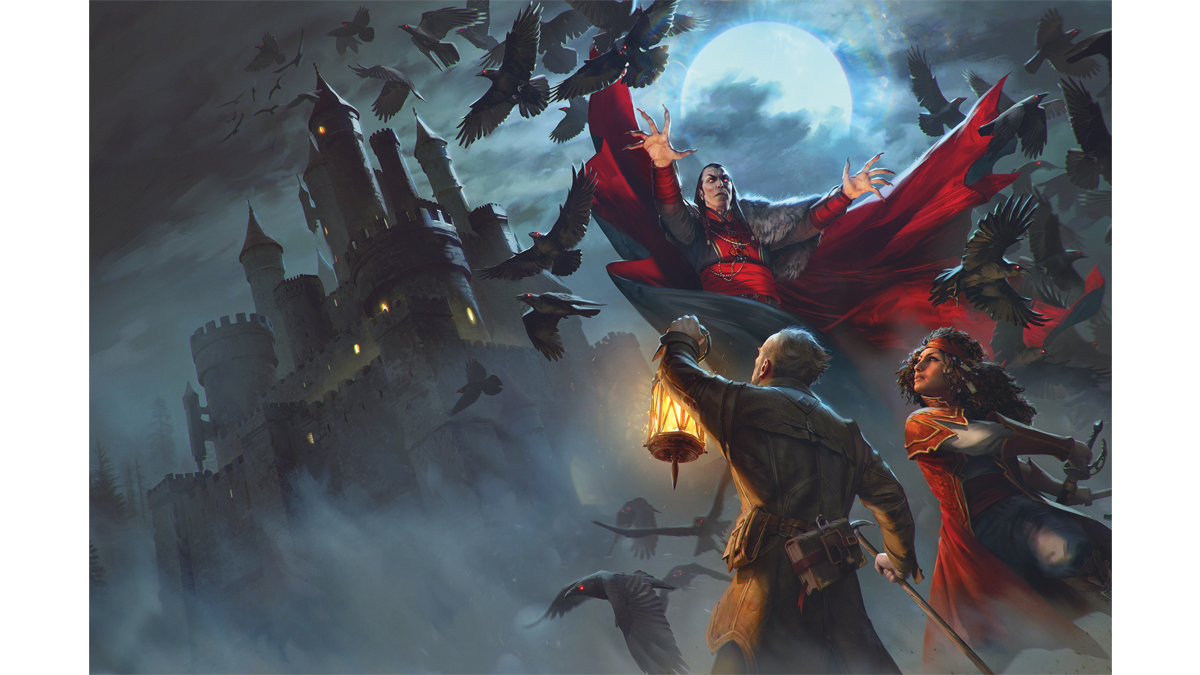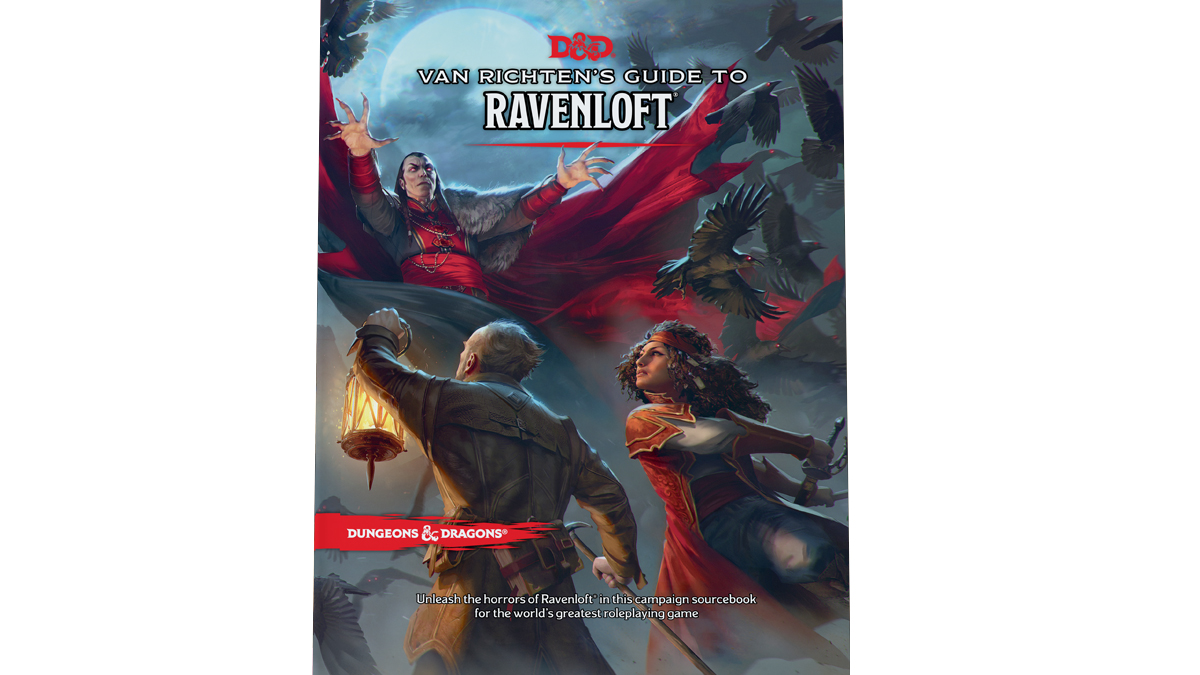Yesterday (2/22/21), Wizards of the Coast released a teaser video featuring a spirit board which spelled out the message “The mist beckons.” For fans of the Curse of Strahd Dungeons and Dragons campaign, these words will be familiar. For everyone else, let us dispel the mystery and reveal what messages the spirit board didn’t spell out. The next release for Dungeons and Dragons 5e is: Van Richten’s Guide to Ravenloft, which expands on the horror-based Domains of Dread which make up the countless worlds of Ravenloft, including Barovia.

Quick Look: What’s in it?
Van Richten’s Guide to Ravenloft includes tools for Dungeon Masters for world-building, monster stat blocks, and 30 Domains of Dread with their own stories, villains, monsters, etc. The Guide also includes player options like backgrounds and sub-classes, and new customization options such as Dark Gifts and the new Lineage mechanic, which is being introduced as a way to have playable vampires and hags.
As with many other D&D supplements, there are many artists and authors included in the work. In this book, notable horror authors help bring the 30+ Domains of Dread to life. Cassandra Khaw, author of Nothing But Blackened Teeth, is joined by Molly Ostertag, author of The Witch Boy, and K Tempest Bradford, author of The Copper Scarab, along with a host of other creators you might already know. Each writer tackles their own part of the horror genre, bringing unique perspectives and reimaginings to the classic tropes we have come to know and love. As part of our preview of this product, Wizards gave us an example of one reimagining: Falkovnia features a zombie apocalypse trope, in which the heroes are forced to evaluate the practicalities of their morals in the face of imminent danger, but instead of being set in a mall, the players find themselves defending a custom fantasy setting, trying to survive the onslaught with only the tools (and NPCs) on hand.
What’s in it for Dungeon Masters?
Dungeon masters have a lot of material to chew on with this supplement. Over 30 Domains of Dread are provided, each with its own small adventure, setting, villains, mysteries, and horror trope. There are also tools like the Spirit Board, which can be used with players similar to the Tarokka deck from Curse of Strahd. There are also monsters, NPCs, and pages and pages of advice on running your own horror campaign. Many of these tools will go well with those introduced in Candlekeep Mysteries, since so many good horror stories feature a dose of mystery.

For Players
Players will find two new subclasses with horror themes, along with some backgrounds and other customization options like Lineages.
TL;DR:
Van Richten’s Guide to Ravenloft is a 256-page hardcover book packed full of new features to make your horror games more immersive and enjoyable. Whether you discovered Ravenloft in 1990, or found it 30 years later when you joined a friend’s Curse of Strahd adventure, you’re sure to find lots of features to love. There are even features for players and DMs who aren’t interested in horror specifically, including monsters, character options, and making a great game happen at the table. It will be available May 18th, 2021, featuring a cover by Anna Podedworna, with an alternate art cover by Schott M. Fischer only available through game stores.




